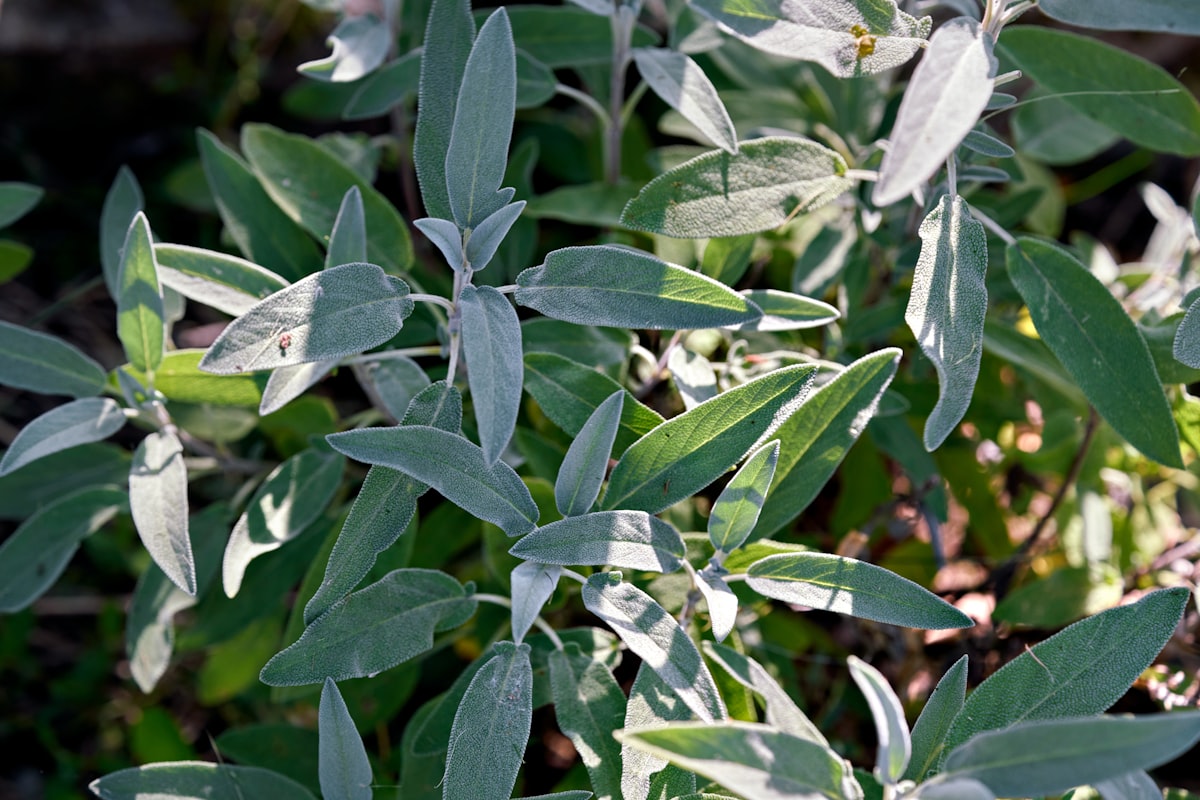How to Grow Sage
Sage is a versatile and easy-to-grow perennial herb known for its wooly, gray-green, aromatic leaves. Thriving in full sun and well-drained soil, this hardy plant is a favorite among gardeners and culinary enthusiasts.

Table of Contents
Growing sage in your garden is a rewarding endeavor, as this versatile herb offers a range of uses in both culinary and medicinal applications.
You can easily incorporate this aromatic and flavorful herb into your gardening routine by understanding the basics of planting, maintaining, and harvesting sage.
About Sage
Scientifically known as Salvia officinalis, Sage is a versatile perennial herb from the mint family.
This semi-shrubby plant features wooly, gray-green, aromatic, ovate leaves stretching up to 4 inches long, making it a valuable addition to any garden.
Not only is sage highly regarded for its culinary uses, it also boasts attractive foliage and pretty blooms in summer, attracting butterflies and adding visual appeal.
Sage thrives in full sun exposure, is slightly acidic to neutral soil pH, and is hardy in zones 4 to 10.
As a low-maintenance plant, you can easily incorporate sage into your garden or containers to enjoy its benefits year after year.
Growing Sage
To begin planting sage in your garden, select a location with full sun exposure and well-draining soil.
Prepare the soil by adding compost and ensuring a slightly acidic to neutral pH level.
Slightly moisten the soil and sow the sage seeds about 1/4 inch deep, then cover them with a fine layer of soil.
However, you can also germinate the seeds indoors and transplant the seedlings outdoors later.
Plant seeds or transplant seedlings in your garden after the last spring frost when the soil is at least 60°F (15°C).
Space sage plants about 18 to 24 inches apart to give them ample room to grow.
Initially, water the sage gently and consistently until the roots become established. Gradually reduce watering, as sage thrives in somewhat dry conditions.

Caring for Sage Plant
Sun and Temperature
Sage thrives in full sun and can tolerate a wide range of temperatures. Place your sage plants in a spot that receives at least six to eight hours of sunlight daily.
Water and Humidity
Water your sage plants regularly, but avoid over-watering. Be sure to allow the soil to dry out between watering, as sage prefers slightly dry conditions.
Soil
Plant sage in well-draining soil with a slightly acidic to neutral pH for optimal growth. Amend the soil with compost to improve its nutrient content and drainage.
Fertilizing
Sage doesn't require much fertilization. However, if necessary, you can apply a light application of balanced, all-purpose fertilizer in the spring.
Pruning and Propagation
Prune your sage plants regularly to prevent them from becoming woody. To propagate, take stem cuttings or sow seeds directly into the soil in spring or autumn.
Troubleshooting Plant Problems
Growing Problems
Sage plants may experience issues like root rot and mildew if they are over-watered or do not receive proper sunlight.
To prevent root rot, scale back watering to once per week in hot weather and once every two weeks during mild weather.
Only water sage during Spring, Summer, and Fall, and only if the soil is dry.
Mildew can be avoided by ensuring that your sage plant gets at least six hours of sunlight daily and has proper air circulation.
Pests and Diseases
Pests like spider mites and diseases such as fungal infections can affect sage plants.
To prevent spider mites, keep the area around the plant clean, remove any affected leaves immediately, and treat the plant with a soapy water solution.
For diseases, choose sage varieties that are hardier and more disease-resistant, and check your sage plants daily for any symptoms.
Watch for fungal diseases in moist and rainy climates and take steps like providing the plant with proper air circulation and sunlight to reduce the risk.
Companion Planting
Companion planting is a great way to improve the growth and health of your sage plants. Sage does well when planted alongside rosemary, thyme, and other herbs.
These plants help to repel pests and attract beneficial insects, such as pollinators.
Additionally, planting sage near vegetables like tomatoes and peppers can help to improve their flavor and yield.
Conclusion
Sage is an easy-to-grow perennial herb that can be valuable to your garden.
Choose a location with full sun exposure and slightly acidic to neutral soil pH for optimal growth. To maintain a healthy sage plant, pruning and occasional watering are necessary.
Enjoy your homegrown sage in various culinary dishes and experience its numerous health benefits.
Frequently Asked Questions
What are the best companion plants for sage?
Sage pairs well with vegetables like cabbage, carrots, and tomatoes. Planting these companions together can improve pest control and overall crop health.
What type of soil is best for growing sage in pots?
Sage thrives in sandy, loamy, well-draining soil with a pH between 6.0 and 7.0. Ensure that your potting mix meets these requirements for optimal growth.
How can I ensure successful sage germination?
Plant 8-10 seeds per 6-inch pot and cover lightly with soil. Keep the soil moist, thin out seedlings to leave one sturdy plant per pot, and transplant when seedlings are several inches tall.
Are there any special care requirements for indoor sage plants?
Indoor sage plants need similar care as outdoor ones. Provide ample sunlight, consistent watering, and good air circulation to keep the plant healthy indoors.
What are some popular sage plant varieties to grow?
Some popular varieties include common sage (Salvia officinalis), purple sage, golden sage, and tricolor sage. Each type has different foliage colors and patterns, giving you options.
Does sage thrive better in full sun or partial shade?
Sage prefers full sun but can tolerate partial shade. Ensure your sage plant receives at least six hours of sunlight daily for optimal growth.


